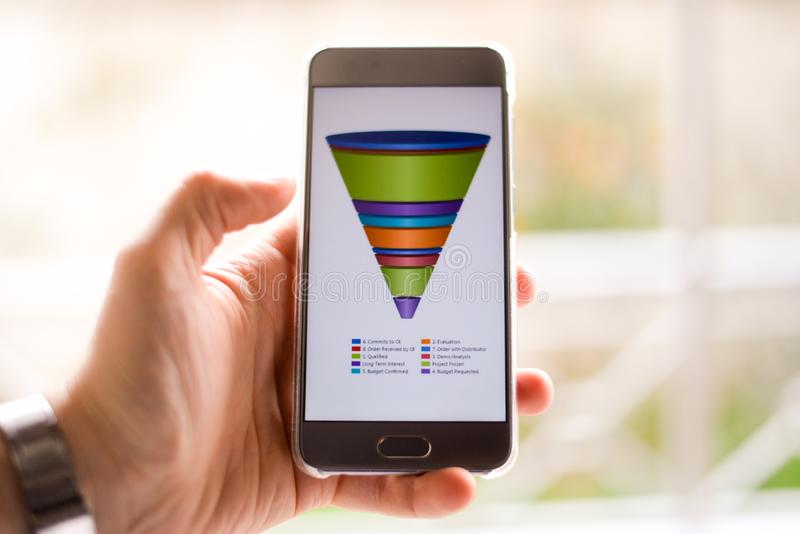Are you tired of seeing potential customers slip away from you? Do you lack efficiency in sales management? To be successful, you must be organized and rely on a reliable structure that allows you to identify the journey of your customers, to analyze and follow your entire sales process, and thus to identify profitable commercial activities and those that can be improved.
There is an essential tool to effectively manage your sales: the sales pipeline. Thanks to it, the members of the sales team can follow the progress of their prospects and put in place the necessary actions.
Each company has one or even several pipelines (depending on the products and services sold) which are specific to it and which describe the traditional purchase path.
Learn what a sales pipeline is and how to build your own.
What is a Pipeline in Salesforce?
A sales pipeline helps you visualize your sales process, which is the different processing steps (from making contact to closing the sale) that turn a prospect into a customer.
It is an indispensable tool for sales teams who constantly have to juggle several prospects and who must not lose sight of any transaction.
The sales pipeline makes it easier to achieve your goals by breaking the sales process down into small, easy-to-follow tasks. This makes it easier for you to know what stage your prospects are at and when your conversions are failing.
It is also an important tool for the sales manager who wants to know if his sales process is working well because it helps to identify the most profitable sales activities for your company. Without a sales pipeline, it can be difficult to know how effective your sales process is and where you can improve to make it more successful.
Read Also: Everything You Need To Know About High Ticket Sales
How to create a Pipeline in Salesforce? 5 simple steps
Follow these 5 steps to create a Pipeline in Salesforce.
1. Know your product, your customers and your pitch
There are basic rules for selling your products or services well. In particular, you must master these fundamentals:
- your product: knowing your product well allows you to present it favorably to your potential customers and answer all their questions with confidence;
- your client’s profile: because you perfectly know the profile of your prospects and their problems, you know which lever to act on to trigger a sale;
- your sales pitch: prepare an irresistible sales pitch that will prove that your product is THE solution to solve your potential customer’s problem.
2. Define your pipeline stages
A business relationship works like a romantic relationship: you don’t ask the person to marry you or move in with you on the first date. You have to go through several stages, getting to know yourself until the final decision (here the purchase of your product). These steps are different for each company. Note that the more complex the product, the longer the sales process and the more stages the pipeline will have.
To define your own stages, think about the buying journey a prospect needs to follow to become one of your customers.
Here are the three stages that every prospect goes through:
- awareness of the opportunity or the problem encountered;
- consideration: the buyer has identified his problem or his opportunity, he has determined his needs and his evaluation criteria, and he finds out about the existing solutions;
- the decision: the prospect is ready to take action and compares the sellers and the offers.
Following this path, the phases of a pipeline are:
- Contact: the prospect contacts your company.
- Making an appointment: he agrees to meet you to find out how you can help him.
- Meeting ended: the prospect has come to the meeting and you explain the next steps.
- Suggested solution: he is interested in your product.
- Sending an offer: the prospect studies your offer.
- Deal signed
- Case lost
3. Track the behavior of your prospects
By analyzing the average time that each prospect spends at each stage of the sales pipeline, you can conclude that those who spend more time are those who convert into customers. Your sales team can then determine:
- who are the prospects most likely to convert,
- the percentage of prospects who move on to the next stage, i.e. the conversion rate of each stage,
- monthly and/or quarterly revenue forecasts.
Also analyze what is the trigger that encourages your prospects to take the next step, and pushes them to buy your product. For example, is it watching a video, requesting a demo, or trying the product for free?
4. Turn these observations into numbers
How many leads do you need in each phase of your pipeline to achieve your goals? For this calculation, divide your monthly revenue goals by the average transaction amount. This will give you the number of transactions needed to reach your goals. Then divide that number by the conversion rate for each stage.
For example, your monthly goal is €100,000, your average transaction amount is €2,000, and the conversion rate during the trial phase is 80%. To hit your monthly goal, you need to complete 50 deals per month (100,000 / 2000 = 50), and your sales team needs to have at least 63 leads to hit that goal (80% of 63 is 50).
Use this data to define the actions to be implemented by your sales and marketing teams to reach the desired number of prospects and encourage your prospects to move from one stage to another of your sales pipeline (sending a follow-up or newsletter, call, etc.).
Read Also: Counter Sales Offers Affordable Option For More Companies To Add Retail Sales
5. Create or adapt your sales process
Now, use this data to create your sales process by following these steps:
- assess your current sales process (if you have one);
- analyze all the sales you have successfully closed to understand what has worked well;
- improve your strategy based on data from your sales pipeline.
Creating your pipeline in Salesforce isn’t easy, but with this tool you’ll improve your results and succeed in developing trusting relationships with your customers. To help you, you can use the following model:



